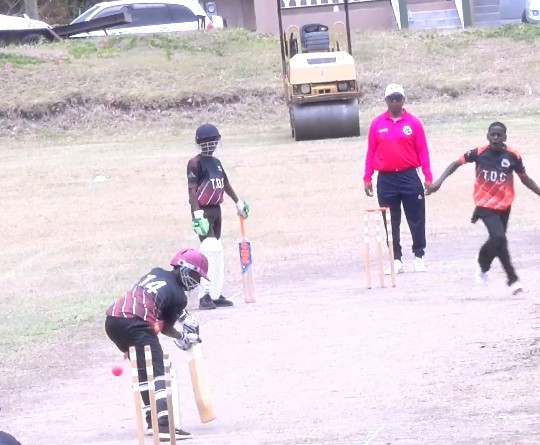Charlestown Primary Defeats Ivor Walters Primary
The Runako Morton/TDC Primary Schools Cricket tournament faced significant disruption due to persistent rain on Tuesday, July 1st, 2025, permitting only a single match to proceed. This solitary encounter unfolded at the unofficial Meritzer Williams Park in Ramsbury, pitting Charlestown Primary against Ivor Walters Primary School. Charlestown Primary took the first strike, compiling a modest total of 60 runs for the loss of 4 wickets in their allotted 12 overs. Divanand Ghaness emerged as the top scorer for Charlestown, contributing a valuable 26 runs. T’Vern Herbert spearheaded the Ivor Walters bowling attack, claiming impressive figures of 3 wickets for a mere 11 runs.
Ivor Walters Primary commenced their chase with determination, reaching 35 runs for the loss of 2 wickets after 8 overs. T’Vern Herbert, showcasing his all-round abilities, remained unbeaten on 14, while Terique Roberts proved effective with the ball, securing 2 wickets for 5 runs. The match, poised on a knife-edge, witnessed a dramatic turn of events in the 8th over. With Ivor Walters requiring another 26 runs from 24 deliveries, Zakeem Bailey delivered a searing yorker that shattered the stumps, dismissing the batsman and shifting the momentum. Just as the contest intensified, the heavens opened up, forcing an abrupt halt to the proceedings.
The intervention of rain necessitated the implementation of the Duckworth-Lewis-Stern (DLS) method, a mathematical formulation designed to calculate target scores in rain-affected limited-overs cricket matches. The DLS method considers various factors, including the number of overs played, wickets lost, and the resources available to each team. After meticulous calculations, the DLS method determined that Charlestown Primary had achieved a winning margin of 3 runs. This outcome underscored the unpredictable nature of cricket, where even the most meticulously planned matches can be influenced by external factors, such as inclement weather.
The DLS method, while sometimes complex, has become an essential tool in ensuring fair and equitable results in rain-interrupted cricket matches. It aims to provide a statistically sound basis for determining which team is in a more advantageous position at the point of interruption. By considering the resources available to each team, including remaining overs and wickets, the DLS method strives to project the likely outcome of the match had it continued uninterrupted. This statistical approach adds another layer of complexity and intrigue to the game of cricket, particularly in limited-overs formats.
The application of the DLS method in the Charlestown Primary vs. Ivor Walters Primary match exemplifies its role in adjudicating rain-affected games. In this specific scenario, the method deemed Charlestown Primary’s total of 60 runs in 12 overs to be worth 3 runs more than Ivor Walters Primary’s 35 runs for 3 wickets in 8 overs. This seemingly narrow margin, determined by sophisticated statistical analysis, ultimately decided the outcome of the match, highlighting the significant impact of the DLS method in modern cricket. This instance underscores the importance of adapting to unforeseen circumstances and the role of statistical analysis in ensuring fairness and objectivity in a sport often governed by unpredictable elements.
The single match played in the Runako Morton/TDC Primary Schools Cricket tournament serves as a microcosm of the broader cricketing landscape, showcasing the delicate interplay between skill, strategy, and external factors. The rain interruption, while disrupting the flow of the game, ultimately necessitated the application of a crucial element of modern cricket administration – the DLS method. This mathematical formulation, designed to ensure fairness and objectivity in rain-affected matches, played a decisive role in determining the outcome, highlighting its importance in the contemporary game. The match also underscored the unpredictable nature of cricket and the importance of adaptability for both players and officials, emphasizing the ever-present influence of external factors on this dynamic and engaging sport.
Share this content:












Post Comment